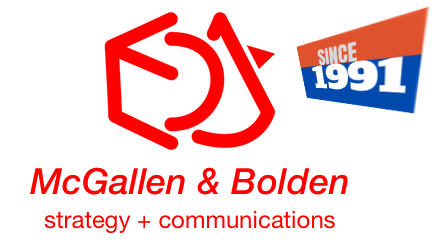What To Know
- Therefore, a smart B2B business must take a “just in case” approach to marketing and PR, which is strategic and forward-looking at the long game, with redundancy and preparedness built into the entire marketing and communication ecosystem to address any emergency or crisis, as well as ongoing communication and marketing needs.
- This simply means engaging a pool of external experts and agencies to supplement internal resources on a retained basis, so that they can provide all the marketing and communication needs in a strategic planned program throughout the years, as well as scale any time whenever there is s surge in needs such as a crisis.
Before the pandemic, the “just in time” paradigm was “fashionable”, especially in the manufacturing sector. At that time, “just in time” meant optimizing available resources to manufacture and stock only the minimum inventory, and scale only as and when needed. As an early practitioner of total quality management, I would have recommended this practice too, before the pandemic of course.
In the marketing and public relations (PR) arena, some executives and businesses may also be tempted to erroneously save costs by going “just in time”, only engaging external experts and agencies as and when needed. However, there is no “one size fits all” success formula.
For example, if you happen to be the next Apple or Tesla and have a charismatic CEO who can charm audiences worldwide with just one product launch, and that product happens to be a desirable product anyone would fall madly in love with, then perhaps you can get away with “just in time” marketing and PR.
But unfortunately, we do live in the real world, and most businesses are not the next Apple, Tesla, Samsung, or Huawei. This is especially true for B2B businesses with products that would only charm the most fervent engineers, and costs millions if not billions to implement, and will never be in the hands of everyday consumers. So, the idea of sending one news release or having just one media launch, hoping to attract many mainstream media journalists and get international media coverage, would be a rare occurrence at best, to put it kindly.
From “just in time” to “just in case”
Contrary to belief, a crisis happens to almost any business.
Unlike the unconnected days before the Internet, a crisis could be an oil spill, a financial scandal, loss of lives at a factory, etc. These days of broadband and 5G networks have brought about a new area of crises, the cybersecurity crisis, which can be data leaks, privacy problems, network intrusions, denial of service to network assets, open source software and other license infringements, etc. Such digital crises can and do happen to just about any business of any size, and there is a need to be continually prepared, including the need for media training and crisis communication.
The pandemic, and the global trade and other regional conflicts are crises that have definitely turned the world upside down. The world is now heavily polarized, with nations now looking at ways to have independence of the supply chain, and stocking up on supplies just in case. So, the “just in time” paradigm is now superseded by the “just in case” paradigm, where you are wiser and smarter if you have redundancy in your pockets and warehouses, and are ready to tackle any sudden surge in need.
This is the same for marketing and PR, especially for B2B businesses. Most of these businesses have products that cost a lot, are used by only a technical few (even if the ultimate purpose is to serve millions), and take a long time to sell through and implement. Some of such products may be enterprise cybersecurity, AI (artificial intelligence), robotics and automation, healthcare, critical infrastructures, energy, transportation, and so on.
Therefore, a smart B2B business must take a “just in case” approach to marketing and PR, which is strategic and forward-looking at the long game, with redundancy and preparedness built into the entire marketing and communication ecosystem to address any emergency or crisis, as well as ongoing communication and marketing needs.
What is the “just in case” paradigm in practice? This simply means engaging a pool of external experts and agencies to supplement internal resources on a retained basis, so that they can provide all the marketing and communication needs in a strategic planned program throughout the years, as well as scale any time whenever there is s surge in needs such as a crisis.
Are you ready to use “just in case” to win?
While some businesses have unwisely cut their marketing and communication budgets, the smarter businesses have scaled up their marketing and communication budgets knowing full well this is the best time to dominate the weak economy with a sustained PR and marketing program that flush out the competition in markets, profits, and mindshare before they can recover.
We are in the 21st century, post-pandemic, in the world now embroiled in conflicts which affect trade, economies, and livelihoods, we need to be prepared for redundancy, and our marketing and PR should reflect this forward-looking “just in case” wisdom.
If you want to win with “just in case” PR and marketing, get in touch now!

Dr Seamus Phan – Global C-suite Publicist & Strategist (Biochemist, Cybersecurity & Webdev pioneer, Author, Journalist) with 37 years of professional field experience.
